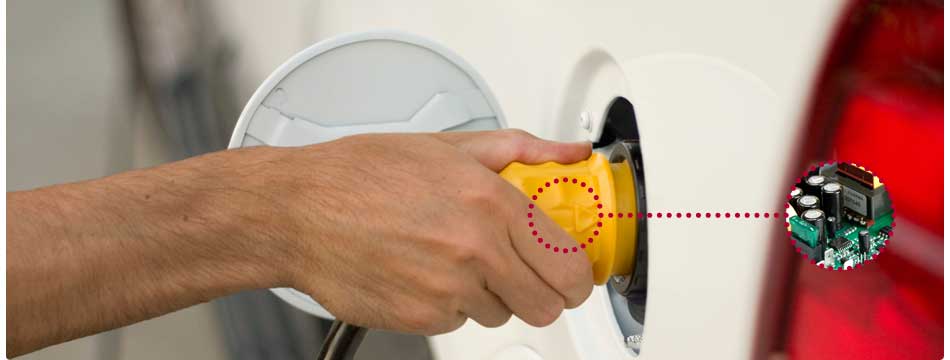
EV Fleet to Grid: why large fleets may be the first candidates for commercial V2X applications
V2X is a hot topic since it facilitates the transition from fossil fuels to renewable energy in an innovative and cost-effective way. In the near future, any battery on wheels may contribute to the supply and demand balance in the electricity grid.
In this article we focus on the potential of fleet applications of V2X and why large fleets may be the best first candidates for commercial V2X applications.
Fleet electrification raises a significant need for charging infrastructure that is cost-effective, optimally sized, highly efficient, and reliable. Adding vehicle-to-grid (V2G) helps fleet operators save on operational costs and generate income from grid services.
For electric cars to function as a virtual power plant, aggregation is one of the biggest challenges. Aggregation software development is needed to link all the assets, with fast response times, cyber security and respecting the individual needs of the users.
This aggregation problem is bypassed with the fleet-to-grid implementation. By offering a controllable power source/load of 1MW+, the TSOs can manage the grid in a way that they are familiar with and with systems and standards that are already in place.
PRE’s V2G chargers provide up to 180kW of bi-directional power in a single unit. DC-based V2G technology, where the charger is stationary rather than on-board (AC) the vehicle, offers the highest rate of return for fleet electrification projects. Read more about Onboard versus Offboard V2G (AC vs. DC v2g).
We illustrate below how fleet owners and car manufacturers can earn additional revenue from stabilizing the grid when they manage large fleets of electric vehicles in a depot or a production facility.
Example 1: V2G Fleet of a Car Manufacturer
A car manufacturer must store cars that come off the production line before they are sold and sent out to distributors. The cars are typically parked for weeks before being taken off the site for distribution and sales. This means car production facilities are car parks with hundreds of vehicles parked, idle, on a constant basis. With electric cars, if the manufacturer keeps them plugged in to the grid and enables bi-directional use, that fleet can become a large stationary storage resource. The added revenue could be worth up to 3.2 million €/year for a 34GWh/40MW site. The services that can be performed are ancillary services/grid support for the network operator.
Such industrial facilities already benefit from competitive electricity rates, but if time-of-use tariffs are applied, the V2G on site can generate further benefits from price arbitrage. As for the issue of battery warranty, a customer concern which may arise as due to the cycling impacts on the battery, the manufacturer can decide to warrant the battery for this application, to capture the early revenues. PRE offers a range of products suitable to support this use case.
PRE V2G Chargers:
- V2G 10kW unit
- V2G 20kW unit
- V2G 50kW unit
Example 2: V2G Fleet City Buses
The public sector has committed to leading the way with electrification and cities around the world have started pledging to electrify their vehicle fleet, including bus transportation. Public bus services operated in cities have convenient features to optimise their charging choices: known routes and fixed operating hours. Public buses are used extensively during services hours, depleting batteries of up to 300kWh sometimes on multiple shifts per day, making it critical to minimise their down-time for charging. At the same time, fast charging the large batteries of buses places high requirements on the grid connections, especially in a depot with multiple units.
With smart charging and V2G, the differences in operating schedules for the different bus routes are exploited to create strategies that minimise depot charging load and overall reduce the capital and operational expenditure of electric bus charging. The total cost of ownership is minimised and even becomes cheaper than operating a diesel bus fleet. PRE offers a range of products suitable to support this use case.
PRE V2G Chargers
- V2G 50kW unit
- V2G 180kW unit
Example 3: V2G Fleet School Buses
School buses operate on fixed routes at set times of the day, in between which they are parked – a fleet of 50 idle buses, for example, could be used as a 15MWh/2.5MW battery for grid operators or local utilities. The additional revenue from such a resource, plugged in an average of 70% of the year and providing frequency regulation for system operators, could reach $313 000 per year for the fleet[1]. These revenues reduce the total cost of ownership of the buses, helping accelerate the transition over to electric propulsion which will greatly improve the health of school children. PRE group products suitable for this use case are.
PRE V2G Chargers
- V2G 50kW unit
- V2G 180kW unit
We love to hear from you! For further business cases, product information or inquiries, please contact Claire Weiller:
Claire Weiller
VP Business Development
PRE Power Research Electronics
http://www.pr-electronics.nl/en/
c.weiller@pr-electronics.nl
+447980206166
[1] Assuming PJM market prices
« Terug






